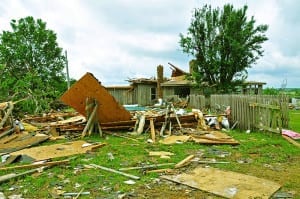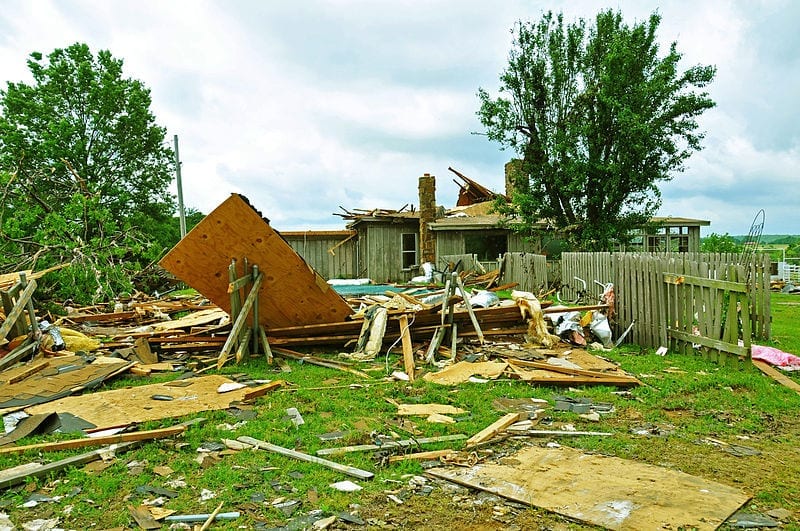BOSTON, Nov. 19, 2013 – According to catastrophe modeling firm AIR Worldwide, on Sunday, November 17, 2013, an outbreak of intense late-season thunderstorms accompanied by high winds, quarter-to-baseball sized hail, and dozens of tornadoes swept across the Midwest, flattening hundreds of homes. While tornadoes were sighted in several states, including Kentucky, Indiana, and Ohio, the most damaging twisters occurred in central Illinois. According to preliminary reports from the NOAA Storm
Prediction Center (SPC), 80 tornadoes were produced by this severe thunderstorm outbreak, making it the second most active severe weather day of 2013 for the United States. However, the SPC cautions that this preliminary number may include double-counting of tornadoes and the total may therefore be revised over the next several days.
“A strong jet stream disturbance and an associated low pressure system made its way across the central U.S. on November 16,” said Dr. Tim Doggett, senior principal scientist, AIR Worldwide. “A combination of supercell thunderstorms and squall line storms developed across the Central Plains as the low pressure intensified and interacted with a very warm, humid air mass – unusually warm for mid-November. The strong jet stream winds not only intensified the storms, but also caused the storms
to propagate quickly once they had formed. This allowed the resulting tornadoes to track for longer distances and inflict more damage.”
At first, the SPC issued a Moderate Risk warning on Friday (for Saturday). However, as the system intensified further, the SPC declared a High Risk of severe weather. Note that this was only the second SPC High Risk day of 2013 (even May 20, 2013, the day of the Moore tornado, had not been classified as high risk).
According to AIR, residential structures in the affected area typically comprise wood-frame construction, which are more vulnerable to high winds and windborne debris than masonry structures. Commercial buildings are, on average, less vulnerable than residential structures or automobiles, but exhibit a broader damage distribution due to wide variations in construction practices and design. Light-metal structures are the most vulnerable to high winds and can suffer severe to complete damage from tornadoes categorized as EF-2 or higher.
For all types of structures, roofs are often the first part to be damaged by tornado winds, as once a single shingle is removed, neighboring shingles can easily be penetrated and lifted. Tornado winds can peel off unsecured slates, roll metal roofs, and damage windward overhangs and eaves. In the direct path of the tornado, failure of the roof system weakens lateral support of walls, contributing to their collapse. On the periphery of the track, lower damage ratios are expected.
“While the high winds and large hail associated with the severe thunderstorm outbreak damaged buildings across the affected region, the worst damage was inflicted by the dozens of tornadoes produced by the storm system, particularly in central Illinois,” said Scott Stransky, senior scientist at AIR Worldwide. “The worst damage occurred in Washington, Illinois, a town of 16,000 located in Tazewell County about 140 miles west of Chicago, where 250-500 homes were destroyed by a powerful tornado that has tentatively been assigned an EF-4 rating (peak winds of 190 mph).”
Leaving a path of destruction 34.5 miles long and 0.5 miles wide, the tornado leveled homes, and overturned cars, and injured more than 100 people. In addition, an EF-3 tornado touched down two miles east of Thomasboro (located near Champaign, IL) and stayed on the ground for 24 miles, causing serious damage in the town of Gifford. The nearby towns of Beecher and Pekin also experienced severe damage. An additional EF-4 tornado was reported near New Minden, IL (Washington County), about 50 miles east of St. Louis, which caused significant damage to the town and surrounding farms.
In addition to damage to buildings, the severe thunderstorm outbreak caused widespread power outages in the affected region. While power has been restored to some customers, local power companies report that over 300,000 homes and businesses are still without power as of November 19.
AIR will continue to monitor this event closely and will post additional information if necessary.


